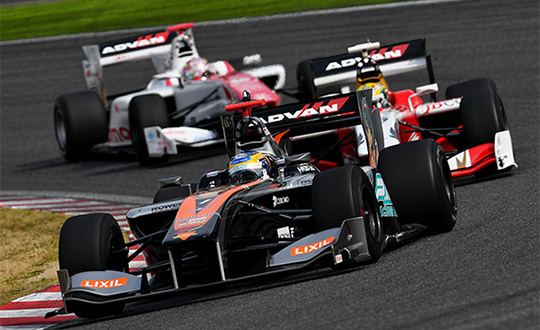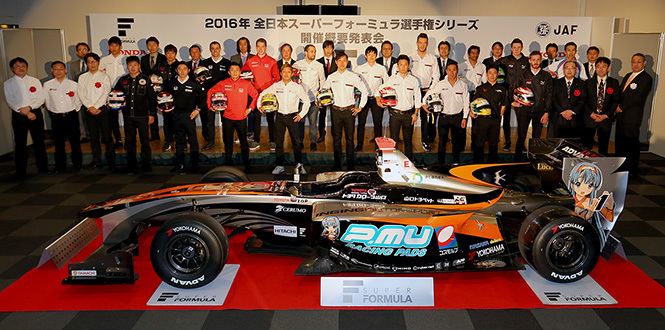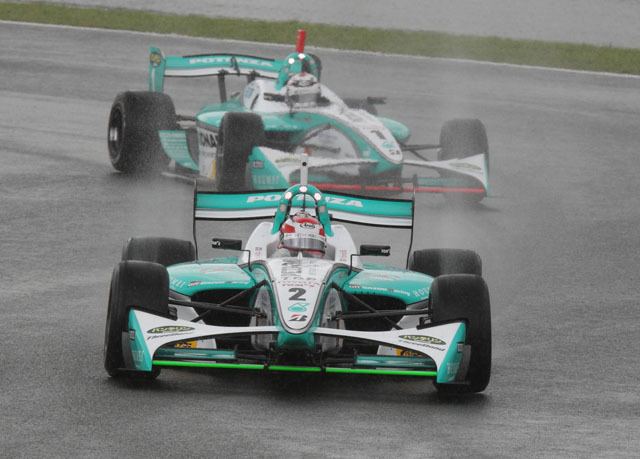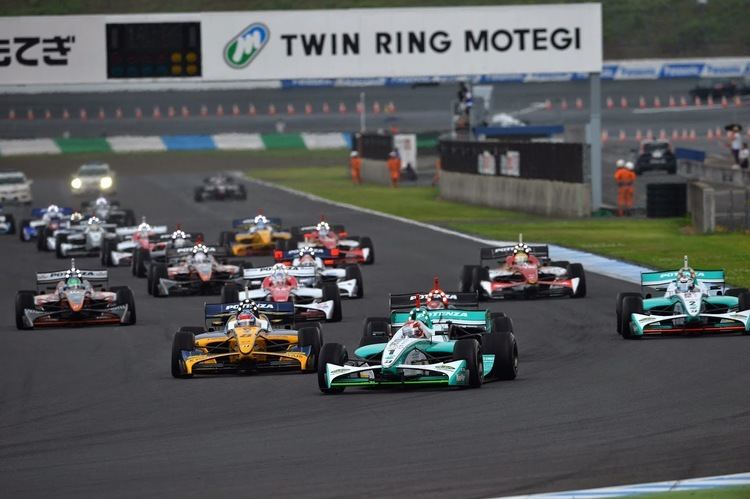Category Single seaters Drivers 19 | Inaugural season 1973 Teams 11 Tire suppliers Yokohama Constructor Dallara | |
 | ||
Super Formula, formerly known as Formula Nippon, is a type of formula racing and the top level of single-seater racing in Japan.
Contents
- Background
- Formula Two 19781986
- 1987 championship
- Formula 3000 19871995
- Formula Nippon 19962012
- Cars
- Scoring System
- Specifications
- Drivers
- Champions
- References

Formula Nippon evolved from the Japanese Formula 2000 series begun in 1973 by way of the Japanese Formula Two and Japanese Formula 3000 championships. For the most part, the Japanese racing series have closely followed their European counterparts in terms of technical regulations, but there have been some important exceptions.

Background

In Japan, though touring and sports car racing was very popular through the 1960s, formula car racing was less so in those days. Even the Japanese Grand Prix lost its popularity after changing its format from touring/sports car racing to formula car racing in 1971.

In 1973, the Japan Automobile Federation (JAF) established the "All-Japan Formula 2000 Championship" as the first top-level formula racing series in Japan, to promote popularity of formula car racing in the country.

The series was created based on the European Formula Two Championship. But the JAF approved use of purpose built racing engines was different from the European F2 series which only allowed race engines based on mass production models. Due to this difference, the series did not fit in with the Formula Two regulations in those days. Therefore, the series was renamed "Formula 2000", not "Formula Two".
Formula Two (1978–1986)

The revised Formula Two regulation in 1976 removed the restriction about engines which had limited the use of engines based on mass production models. With this change the reasoning behind the name "Formula 2000" disappeared. It led to the series being renamed the "All-Japan Formula Two Championship" from 1978.
1987 championship
When European Formula Two ended in 1984, its Japanese counterpart did not follow suit immediately. The JAF considered starting a new Formula Two series from 1988. However, all entrants ran Formula 3000 cars in 1987. So, the 1987 Formula Two Championship was cancelled due to no entry of any cars for that format.
Formula 3000 (1987–1995)
Switching to the open Formula 3000 standard in 1987, the "All-Japan Formula 3000 Championship" started in 1988. Once again, Japanese and European regulations paralleled one another until 1996, when the International Formula 3000 series became a one-make format to lower costs.
Thanks to the bubble economy and Formula One-fad in Japan, the series had many entrants and investors. It attracted many promising young drivers outside of Japan to compete in the series. Inevitably, the end of such phenomena led to the decline of the series.
Formula Nippon (1996–2012)
In the mid-1990s, the Japanese Formula broke away, changing the form of the series to "Formula Nippon". The new Japan Race Promotion, formed by Fuji Television, became the promoter with the recognition of the series by the JAF as the Authority Sport Nationale (ASN) of Japan.
In the 2000s, sports car racing became more popular in Japan, and many Formula Nippon drivers doubled-up in the Japanese Super GT championship.
The 2006 season got off to one of the strangest starts in motorsport history. Because of heavy rain, the opener at Fuji was called off after two safety car laps, and Benoît Tréluyer was awarded the win with half points awarded.
Cars
Until 2002, Formula Nippon was an open formula, where a variety of chassis builders and engine manufacturers could compete. Chassis were supplied by Lola, Reynard, and G-Force, while Mugen-Honda supplied the vast majority of the engines (though Cosworth engines were found in the Formula 3000 era).
However, with the bankruptcy of Reynard in 2002, and the withdrawal of G-Force a year earlier, Formula Nippon once again followed F3000's lead in becoming a one-make series for the 2003 season. Formula Nippon cars were now all Lola B03/50 chassis powered by Mugen-Honda engines; however, unlike F3000, engines in Formula Nippon are open-tuned by private companies.
In 2006 Formula Nippon underwent a drastic revision of its regulations. A new Lola FN06 chassis was introduced, while the engine formula underwent drastic revision. Engine blocks were provided by Toyota and Honda, using the same engine block specifications as found in the 2005 Indy Racing League, with open-tuning still permitted.
American racecar manufacturer Swift Engineering produced the FN09 chassis that was used from 2009 through 2013.
Scoring System
Cars
The base chassis for the series is the Dallara SF14, which was unveiled in Tokyo on 25 March 2013. The car weighs 650 kilograms, and is powered by two-litre single turbo-charged engines from Honda and Toyota, basically the same engines used in Super GT GT500 cars (Super GT500 manufacturer can participate). It also has a drag reduction system similar to that used in Formula One.
Though the chassis is designed by Dallara, 30% of the car is manufactured in Japan. This current vehicle features the theme of speed-up from previous cars.
Comparable to a contemporary spec-series Indycar, a fast lap time at the Suzuka Circuit in a Super Formula spec-series Dallara, approximately 1:37.000 in qualifying, would be roughly 5 seconds slower than a 2014 specification Formula 1 machine.
Specifications
Drivers
However, despite the more technically demanding regulations, the Japanese top-level formula series remains a national series, with second tier status compared to the pan-European GP2 Series and its predecessor Formula 3000. Foreign drivers have always been regular participants in the Japanese championships, and there have been several drivers to come from a Japanese Formula 3000 or Formula Nippon drive to a prominent Formula One role; the best-known of these are Eddie Irvine, Ralf Schumacher, the 1996 Formula Nippon champion, and Pedro de la Rosa, the 1997 Formula Nippon champion.
Champions
* The ( ) indicates there were no other supplier or a model in the year.
